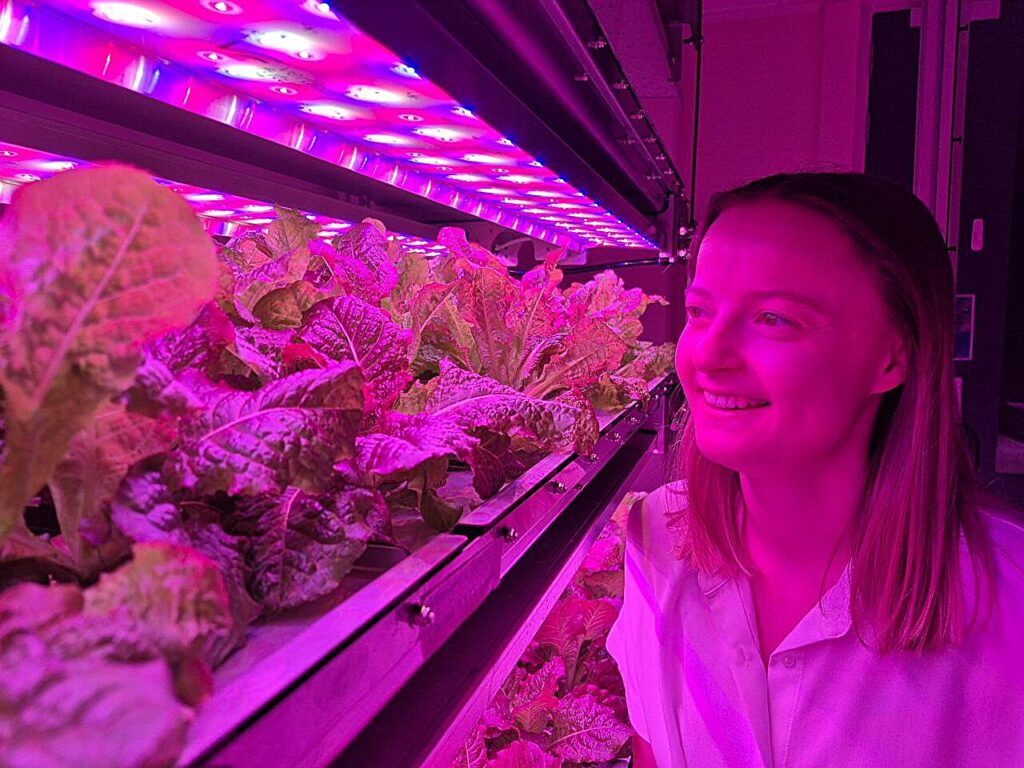
Extreme weather events, from heavy rainfall to heat waves and droughts, are increasingly threatening crop yields globally. As a result, innovative solutions are urgently needed to ensure the sustainability of agriculture. An international collaboration involving the University of Adelaide, University of Cambridge, University of Western Australia, and NASA has proposed a groundbreaking approach to food production that could transform the future of farming.
Their research, published in the journal Trends in Plant Science, has been selected for an upcoming 30th-anniversary special issue titled “Big Concepts—Shaping the Future of Plant Science.” The study introduces the concept of Controlled Environment Agriculture (CEA), which allows crops to be cultivated indoors with precise control over environmental factors such as light, temperature, humidity, carbon dioxide, and nutrients, significantly reducing pest risks.
Revolutionizing Agriculture with Controlled Environment Agriculture
According to Dr. Alison Gill, a postdoctoral researcher at the ARC Center of Excellence in Plants for Space at the University of Adelaide and the paper’s first author, CEA offers the potential for food production anywhere, year-round, with yields up to 20 times greater than traditional agriculture. This method requires significantly less arable land and water.
“Controlled environment agriculture allows crops to be grown indoors under the precise control of light, temperature, humidity, carbon dioxide, and nutrients, while reducing pest risks,” says Dr. Gill. “The result is food that can be produced anywhere, year-round, with yields up to 20 times greater than traditional agriculture, with much less arable land and water required.”
While inspired by research aimed at growing plants in space, the most significant impact of this technology will be felt on Earth. In Australia, for instance, container farms could bring fresh produce to remote outback communities, reduce food miles, and support farmers during droughts by using recycled water. Dr. Gill also envisions indoor plant-based pharmaceuticals and other high-value bioproducts as substantial economic opportunities for CEA.
Challenges and Opportunities in Indoor Farming
Despite the promising potential of CEA, its implementation has been largely limited to small, pick-and-eat crops like lettuce, herbs, cucumbers, and microgreens. Building and operating high-tech farms efficiently remains a considerable challenge. Professor Matthew Gilliham, Director of Plants for Space and the paper’s senior author, notes that specific targets must be addressed for CEA to become a viable production platform.
“We have identified specific targets that plant scientists must address, and the routes by which this could be achieved, as a prerequisite for controlled environment agriculture to form a viable production platform going forward,” says Professor Gilliham. “This includes a pre-breeding pipeline for traditional horticulture, broadacre agriculture, and even forestry, increasing opportunities beyond pick-and-eat crops.”
Professor Alex Webb, Head of the Circadian Signal Transduction Group at the University of Cambridge, emphasizes the need for creative minds to adapt crops to indoor environments using the latest technologies. He believes that by combining precise environmental control with cutting-edge plant science, it is possible to grow plants best suited to future challenges.
Implications for Global Food Security
If fully implemented, CEA could secure local fresh food supplies year-round, even under extreme weather conditions, from urban centers to the most remote regions of the planet. This development represents a significant step forward in addressing global food security challenges.
“If implemented to its potential, it would secure fresh food supplies locally all year round, even under extreme weather, from inner cities to the most remote corners of the planet and beyond,” says Professor Webb. “With the right investment, these innovations could redefine what it means to grow, eat, and share food in the 21st century.”
The move towards indoor farming is not intended to replace traditional agriculture but to supplement it, providing a robust solution to the growing demands of a changing world. As climate change continues to impact traditional farming methods, the integration of CEA could play a crucial role in ensuring a stable and sustainable food supply for future generations.






